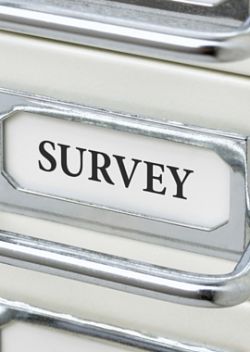
AAA 2016 State Medicaid Ambulance Rate Survey Results Released
Just Released!
Normally this blog focuses on an area of Medicare reimbursement or compliance. However, this month I want to talk about Medicare’s companion program, Medicaid.
When you talk to ambulance providers around the country about their State’s Medicaid Program, a universal truth emerges: no one believes their Medicaid Program fairly reimburses them for their services. This statement is not particularly controversial. The Government Accountability Office has on several occasions looked at the relationship between our industry’s costs and Medicare’s payment, and has consistently determined that Medicare fails to adequately reimburse us for our costs. Given that Medicaid payments are usually some fraction of what Medicare pays, there is really no debate that our industry loses money transporting Medicaid patients.
What I find more interesting is the sheer number of people that are convinced – – and I mean absolutely convinced – – that their state has the lowest Medicaid rates in the country. Call it a reverse Lake Wobegon effect. Of course, not everyone can be right. Only one state can have the lowest ambulance rates (answer below). Conversely, only one state can hold the honor of having the highest rates. But how to settle these questions?
Well, the AAA has the answer. On behalf of the AAA, I am pleased to announce the release of the American Ambulance Association’s 2016 State Medicaid Rate Survey. This survey sets forth the fee-for-service Medicaid rates for all 50 states. For each state, the Survey lists the rate paid for each of the following procedure codes:
- A0428 – BLS Non-Emergency
- A0429 – BLS Emergency
- A0426 – ALS Non-Emergency
- A0427 – ALS Emergency
- A0433 – ALS-2
- A0434 – SCT
- A0225 – Neonate Transport
- A0998 – Treatment, No Transport
- A0425 – Mileage
- A0422 – Oxygen
- A0382/A0398 – BLS/ALS Routine Disposable Supplies
- A0420 – Wait Time
- A0424 – Extra Attendant
While I can promise that we have taken steps to verify the information on this Survey, neither the AAA nor myself can guarantee its accuracy. The rates set out in this survey are based on publicly available information provided by the various State Medicaid agencies, and may not reflect changes to a state’s reimbursement policy that have not been made publicly available. They will also reflect any emergency budgetary measures or other temporary reductions imposed by a state. That said, our goal is to make this as accurate as possible. Therefore, if you believe the rates for your state are inaccurate, I would ask you to please email me at bwerfel@aol.com, and to provide me with updated information.
I can feel some of you thinking at this point: “This is all fine and good, but how does this actually help me?” Fair question. At a minimum, it will probably make some of you feel better that your state is not actually the lowest. Others may be fairly surprised to find that their state, which they believed to be at or near the bottom, is actually closer to the middle of the road. Many of your states are expanding their managed Medicaid programs, and you find yourself trying to determine whether it makes sense to contract with the MCO (or its transportation broker). Many of these transportation brokers service multiple states, and may be offering rates based on their rates offered by the State Medicaid agency in the state in which they are headquartered (I know it will come as a shock that many of the new MCOs seem unaware that coverage rules differ in each state). We are also aware of instances in which a state association has used past rate surveys as part of a comprehensive strategy to lobby their state legislature for a rate increase, e.g., by demonstrating that the current rates paid by the state are far lower than the rates paid in neighboring states.
Regardless of whether (or how) you intend to use this Survey, I encourage all AAA members to check it out.
Answer: New Jersey has the lowest payment for both emergency and non-emergency transport, at a listed rate of $58.00, plus $1.50 per mile (for the first 15 miles, $2.00 for each mile thereafter). For sake of comparison, a taxi from Newark Airport to midtown Manhattan (a distance of 17 miles) will typically run around $70.00 (plus tip).
Have an issue you would like to see discussed in a future Talking Medicare blog? Submit a question today!